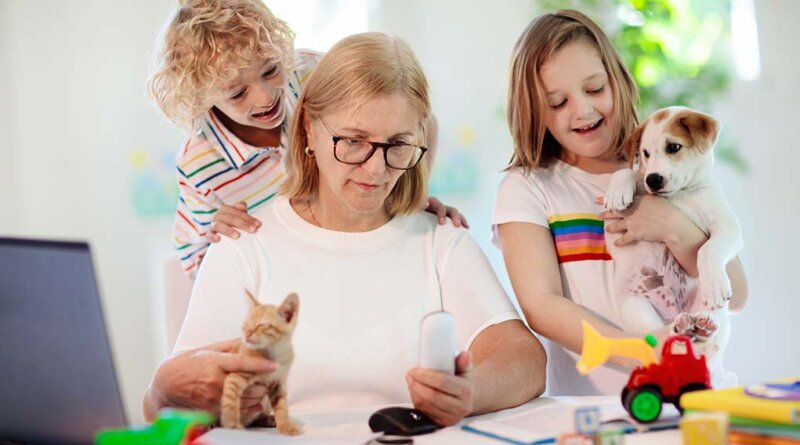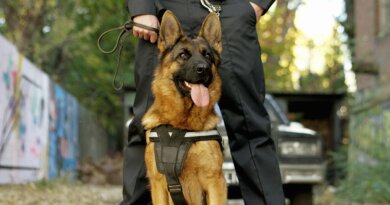7 Tips for Managing a Multi-pet Household with Kids
There’s nothing so heartwarming as a big family, but it’s true that it can get a bit chaotic at times. A household with multiple pets and kids might seem like a daunting task, but in fact all you need is a bit of organization and some ground rules.
1. Be Wise with Your Pet Choices
Once you have kids, your pet choices might need to change to accommodate the limitations and needs of your family. If your pets came first, before you had your children, there’s not much you can do. However, if you’re thinking about new furry (or scaly, or feathery) additions to the family, make sure you do your research thoroughly.
Explore how certain species or breeds get along with children, and be particularly realistic about how much work they require. For instance, if you have a baby who is crawling and putting everything in his mouth, maybe a long-haired dog breed who sheds all over the place is not the best choice at that particular moment.
New pets need to fit in with your family’s lifestyle as seamlessly as possible. And of course, it’s best to avoid any potentially dangerous pets, such as poisonous snakes and spiders, or aggressive dog breeds who don’t get along with children. The compatibility of pet species is another concern you should address.
2. Ensure Everyone Has Space
A step in the direction of peace and good organization is to make sure everyone has their own place and things. The size of your home should be one of the considerations when planning the size of your furry* family.
Every animal should have their own bed as well as a food and water bowl. Kids need a room, or at least their own corner where they can play or study. Remember that both animals and children sometimes need a calm, empty room for a time-out.
If you rent instead of own a home, it’s good etiquette to check with your landlord whether he’s okay with renting to a big, multi-pet family. Some animals also need their privacy when they eat, food aggression is a real thing. Feeding them all in the same room or letting children disturb them during meal times might lead to fights and aggression.
3. Split the Duties
Often the bulk of the work in a family falls to a single person. If you don’t want to drop from exhaustion, delegate! In large families, routines can be a life-saver.
Between the kids and the pets, there are so many things to keep in mind and do: meals, bedtimes, naps, walks, after-school activities, medications, supplements, dietary restrictions, and playdates. Unless you know exactly who needs to do what, and when, some of these are bound to slip your mind.
Make a family meeting and split the duties. For extra security, you can even make a chart and stick it on the fridge. Don’t just divide the duties between yourself and your partner either. Children can help out more than you think. Caring for pets or younger siblings helps develop empathy, independence, and a sense of responsibility in kids.
4. Plan Your Budget
When you have a family with multiple kids and pets, money can be tight. Make a list of your priorities each month.
Quality food and health care should always top the list, but depending on the month, these might be joined by new clothes, grooming, back to school supplies, or other expenses. Each month, put a little bit of money aside for unforeseen circumstances.
You never know when your pet might get sick and need additional veterinary care, or when your car might break down. When considering a new pet, always revise your budget first to see if you can afford it. Skimping on proper nutrition and care for your children and animals is not an acceptable option.
 5. Mind the Hygiene
5. Mind the Hygiene
Children who grow up with animals tend to have less allergies and better overall health. Exposure to a certain amount of pathogens is actually beneficial, as it boosts the body’s natural immune response.
However, it’s still necessary to keep your home, animals and children clean, in order to ensure everyone is safe and healthy. It’s especially important to take precautions if you are cooking for your pets, and particularly if their diet consists at least partly of raw foods.
For example, raw food (especially meat) can carry dangerous pathogens such as Salmonella and E. Coli, so don’t let your kids handle it. Clean all the surfaces and the pets’ bowls regularly. Clean their cages, wash their bedding and give them regular baths.
6. Keep Everyone Healthy
The well-being of your family is your first priority. Take both your pets and your children for regular check-ups. Make sure all of their vaccinations are up-to-date, and consult the vet or doctor about any necessary supplements or medications.
Check your pets regularly and manage any tick or flea problems immediately. Some vets offer discounts for households with multiple animals, which could be a great help to your budget.
7. Teach Them Manners
To ensure that everyone gets along, both your animals and your children might need a little bit of training. Dogs should be trained to obey basic commands, as well as the emergency recall command, if all else fails.
Children too should be taught that, as cute and patient an animal might be, it’s not a toy. Teach your children to be gentle to the animals and to always respect their needs. As an adult, it’s your responsibility to not lavish one with affection at the expense of the others. That could lead to jealousy issues which can have serious consequences. At first at least, avoid leaving your children and your pets alone.
Finally, even if you have a great system in place, remember to arm yourself with plenty of patience. Every family has problems and unforeseen situations sometimes, and the easiest way to get through them is with a lot of kindness and humor. Ultimately, the thing that both pets and children need the most of is your love and attention.







